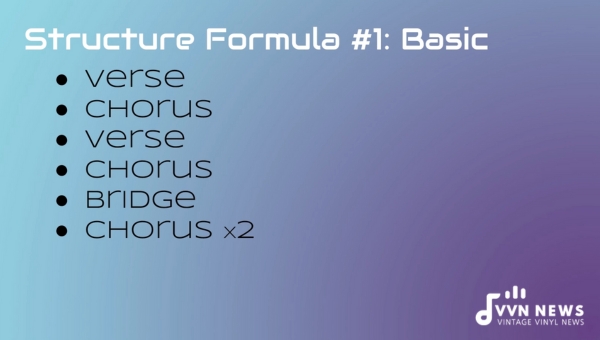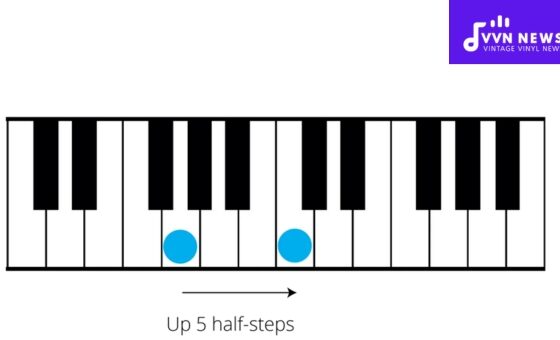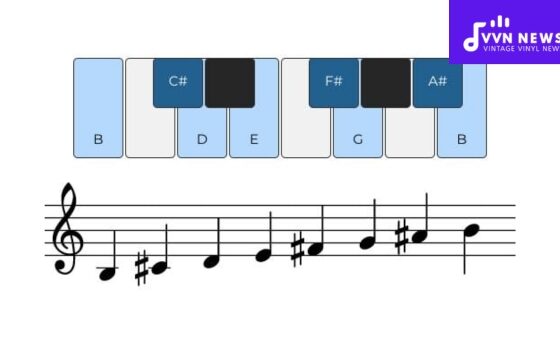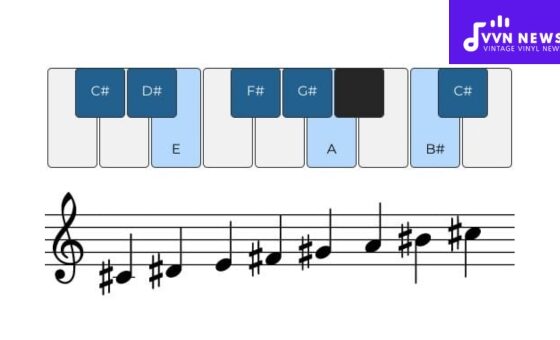When creating music, a firm understanding of bare song structure essentials can spell the difference between an average tune and a hit song.
For budding songwriters, navigating through the sea of bars, verses, choruses, and bridges may initially seem daunting.
But fret not because this post is specially designed for you.
Instead of wondering aimlessly amongst dropped beats and overlapping melodies, let’s take this journey together to explore the bare song structure essentials.
Trust me, once you grasp these fundamentals, you’ll be well on your way to translating your emotions and ideas into beautifully structured songs.
We’ll dissect some music theory jargon and distill it into simple principles that are easy to understand and apply in your songwriting endeavors.
Understanding the Basics of Song Structure
A song structure or form is the arrangement of a song’s sections in a specific order, often repeated throughout its composition.
This blueprint dictates how different areas – like the chorus, verses, and bridge – come together to form the entirety of a song.
The art lies not just in crafting these individual parts but also in determining how they best fit with one another.
Ensuring your song has a logical sequence can significantly enhance its emotional impact and memorability.
This structure paves the way for smoother transitions and a coherent narrative throughout your song.
The components of basic song structures are:
- Verse: The section that usually tells the story or provides critical details.
- Chorus: The catchy part encapsulates the central theme, which is often repeated numerous times within a song.
- Bridge: This section provides contrast, typically used to build up interest, as it leads back into a repeating unit like the verse or chorus.
- Intro/Outro: These are composition parts to begin or conclude your song. Both essentially aim to capture listeners’ attention.
Different songs might follow other structures. Some common ones include verse-chorus (ABAB), verse-verse (AA), and AABA formats.
It’s essential that no matter what system you use, every part contributes to delivering an engaging and complete storytelling experience to your audience.
Also Read: How To Master A Song In 2025? [7 Easy Steps]
Most Common And Basic Song Structure Essentials

As we delve deeper into the world of song structures, we must familiarize ourselves with the most common forms that have dominated the music industry over the years.
The creative manner in which these structures are employed brings about the diversity in tracks we enjoy.
Bar Form (AAB Form)
First off is bar form, commonly referred to as AAB form. This song structure is a classic one and prevalent in traditional blues music.
This composition consists of two similar sections (A, A) – typically verses with identical melodies but different lyrics, followed by a contrasting section (B) – often a chorus or “answer” to the verse.
32-bar Form (AABA Form)
Next up is the 32-bar form, also known as the AABA structure. This format is trendy in jazz and pop standards.
It typically includes an 8-bar A section (verse), followed by another similar or identical 8-bar A section, then an 8-bar B section (the bridge), and finally returns to an 8-bar A section again. It encourages repetition while contrasting with the “bridge” – B part.
Verse-Chorus Form (ABAB Form)
Then there’s verse-chorus form, which goes by ABAB structure, a standard for many pop songs today. In this case, distinct verses (A) alternate with a repetitive chorus (B).
This structure brilliantly balances new content and repetition, making it catchy.
Ternary Form (ABA Form)
Coming up next is the ternary form, expressed as ABA structure.
In this setup, there’s an initial section (A), followed by a differing section (B), and finally, it returns to the original material present in Section A again: hence “ABA.”
Ternary form often creates a feeling of symmetry and completeness that listeners find satisfying.
Strophic Form (AAA form)
Then, we have the Strophic form, represented by the AAA structure. Each verse employs the same music, allowing heavy repetition while progressing through different lyrics.
It is quite common in folk/traditional songs like ‘Amazing Grace’.
12-Bar Blues Form
The 12-bar Blues format (yet another variation of AAA) also deserves mention, given its influence on rock-n-roll and pop genres. The predictable chord progression over 12 bars offers excellent room for improvisation, whether lyrical or instrumental.
Through-Composed Structure
We have what’s labeled as through-composed tunes using ABCD format ad infinitum.
Each section differs from its predecessors, ensuring minimal melodious repetition throughout, offering maximum space for creativity and evolving themes freely within a more complex narrative arc.
Understanding these familiar song structures can be overwhelmingly helpful when arranging your song’s components- giving you insights on innovatively devising measures that evoke listeners’ reactions perfectly aligning with your artistic intents.
Comprehension of these basics empowers you to ‘break the rules’ by effectively benchmarking your sound signature through unique progressive song arrangements.
Also Read: Matching Song Levels In Home Recordings [How To Balance All]
the Common Components of a Basic Song Structure
To frame a successful and enchanting song, it’s crucial to understand the typical sections that form its structure.
These components are like pieces of a puzzle, each contributing a unique element to the picture you’re trying to paint. The very first piece of this puzzle is the Introduction or Prelude.
Introduction/Prelude: The Opening Act
The Introduction or Prelude of a song is like the opening scene of a movie – its purpose is to capture the listener’s attention from the start.
It sets the mood, introduces melodies or themes that might be revisited later in the song, and gets listeners hooked.
The Introduction serves as the listener’s first interaction with your song; hence, it must be designed to attract their attention instantly.
Typically lasting around 4 to 8 bars, it showcases the song’s unique character in a nutshell.
Here are some common types of intros and how they’re utilized:
- Instrumental Intro: Laying down the primary instrument can subtly introduce listeners to the rhythm and mood they can expect throughout the song.
- Vocal Intro: A singer may introduce a crucial melody or theme that draws the listeners in. Examples include The Beatles’ “Help!” or Lionel Richie’s “Hello.”
- Ambient Intro: This creative approach employs various atmospheric sounds to set mood or tone instead of relying on melody or pre-established rhythm.
Making an engaging introduction is about balancing originality with familiarity.
It’s important to remember that your intro forms part of your identity as an artist.
It should invite listeners into your song and offer them something distinctively fresh every time they indulge in your music.
Verse
The verse is undoubtedly a critical component in the structure of any song, as it’s typically where your story is told, and the world of your song is expanded.
It serves as the primary narrative component of the music, enabling you to delve into specific situations, emotions, or experiences.
Each verse usually features different lyrics, sharing more details or elaborating on aspects introduced in preceding and subsequent verses.
Characteristics Of The Verse
- Serves as the main body of the song
- Introduces thematic elements
- Musically and lyrically more straightforward compared to the chorus
Pre-Chorus
The pre-chorus, also known as the ‘lift’, is crucial in setting up your listener for the chorus.
It acts as a musical and lyrical bridge from your verse to your chorus; it prepares your listeners for what’s coming — typically something more intense.
Think of it as a launchpad for your chorus: it pushes momentum upwards until it lands at that impactful moment.
Attributes Of The Pre-Chorus
- Helps build anticipation
- Connects different sections seamlessly
- Typically placed between verse and chorus
Chorus
Here comes our main act: The chorus! If a song were a meal, think of the chorus as its main course—the most memorable part it serves up.
This section generally encapsulates the central theme or idea of a song.
Often sung at higher pitches than verses, choruses lyrically summarize the central message or theme in unforgettable melodies.
Core Qualities Of A Chorus
- Repeated frequently throughout a song
- Houses central theme and strongest emotions
- Carries some of the most catchy melodies
Bridge / Solo
A bridge or solo provides much-needed contrast within our composition—a breath of fresh air within familiar territory.
Particularly useful in longer songs, bridges can take on various forms, from instrumental solos to completely new sections.
They help keep listeners engaged by adding an extra musical layer, preventing monotony.
Important Features Of A Bridge/Solo
- Adds variety and contrast
- Often leads back into repeating sections like verse or chorus
- It may feature unique chord progressions
Outro
An Outro is your final chance to leave a lasting impression on your listener. Just as an arresting intro can draw listeners in, a well-crafted outro can tie up loose ends of our song’s narrative.
It resolves the musical journey that the listeners have embarked on with your song, providing a satisfactory conclusion to the experience.
Key Characteristics Of An Outro
- Typically similar or a stripped-down version of another song section, often the chorus
- Often includes lingering elements that leave listeners fulfilled
- Can contain gradual fading effects
I hope this comprehensive guide to the critical concepts of song structure has shed light on these essentials in a simple and digestible manner. Understanding them can only elevate your capabilities as a songwriter, so don’t shy away from embracing these fundamentals in your next musical endeavor!
Also Read: Audio Mixing For Beginners In 2025 [The Basics of Mixing]
FAQ About song structure
What is a song structure?
Song structure refers to how a song’s different sections are sequenced.
Why is the song structure significant?
Song structure dictates the flow and coherence of your song, enhancing emotional impact and memorability.
What are the main components used in elementary song structures?
There’s typically an introduction (intro), verses, choruses, bridge(s), and an ending (outro).
Can there be multiple song structures in one composition?
Generally, songs follow a single type of structure for coherence; however, creative hybrids can exist.
Are there any rules for choosing the right sequence of song components?
While there’s no universal rule for sequencing, it must resonate with your intended narrative flow or style for the effective storyteller.
Conclusion
The essentials of song structure go beyond merely arranging verses, choruses, and bridges.
It involves understanding the emotional journey a song intends to take its listener through and structuring the components to do just that in the best way possible.
There is no definitive right or wrong structure, but knowing these foundations will provide you with effective guides to channel your creativity when crafting your songs.
Essentially, this understanding equips you with tools to weave your lyrics and melodies into a memorable piece that touches and resonates with your listeners.








